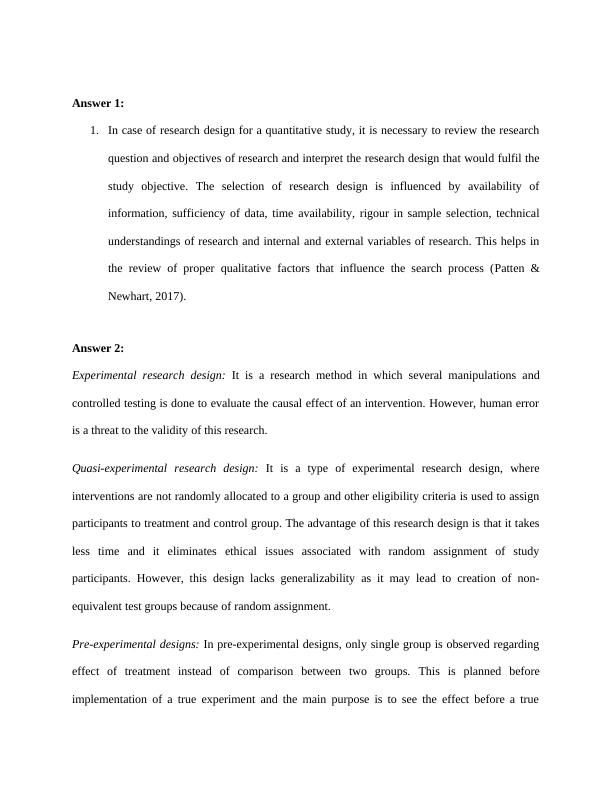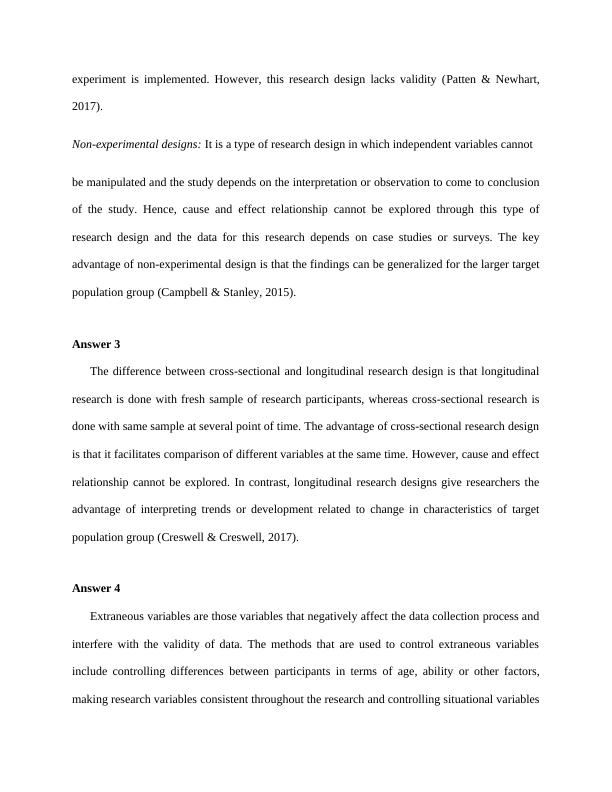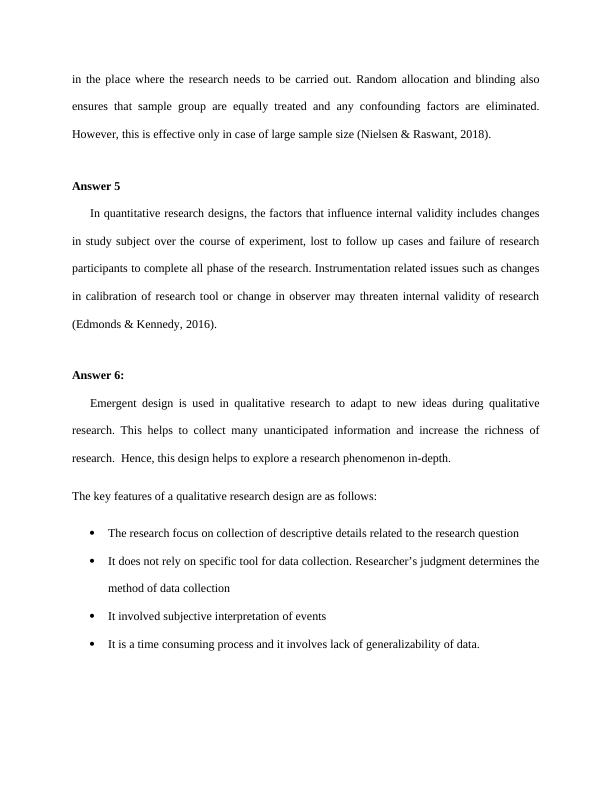Research Design in Quantitative Study
6 Pages1340 Words90 Views
Added on 2023-01-19
About This Document
This article discusses the importance of research design in quantitative studies and how it influences the study objective. It explores different types of research designs, such as experimental, quasi-experimental, pre-experimental, and non-experimental designs, and their advantages and disadvantages. It also explains the difference between cross-sectional and longitudinal research designs and how to control extraneous variables. Additionally, it covers the factors that influence internal validity in quantitative research designs and the traditions and approaches in qualitative research designs.
Research Design in Quantitative Study
Added on 2023-01-19
ShareRelated Documents
End of preview
Want to access all the pages? Upload your documents or become a member.
Research Methodologies | Descriptive Research
|7
|1758
|27
Epidemiological Studies and Housing Improvement
|8
|2635
|98
Research Design Research Design Approach 3 Reliability and Validity 4 Sampling 6 Reference 8 Research Design Framework
|10
|2215
|94
Measurement, Statistics and Appraisal
|5
|754
|25
REFLECTIVE ON STUDENT POST.
|4
|394
|73
Study | Business Research Methodology
|7
|1820
|224



